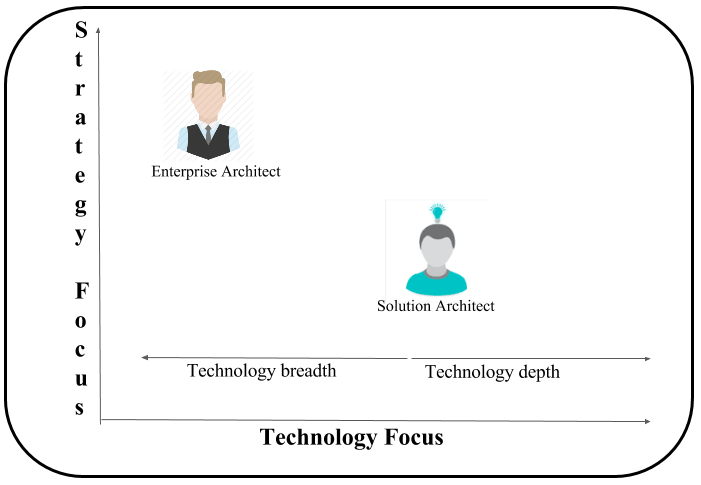Knowing the role of an architect
When I planned to switch my career to the architecture track, I had too many questions in mind. People were referring to so many titles in the industry, such as architect, solution architect, enterprise architect, data architect, infra architect, and so on that I didn't know where exactly do I needed to start and end. The industry had so many confusions to opt for. To understand it better, let me give my own work experience as the best use cases.
In the IT industry, two higher-level architects are named as follows:
- Solution architect (SA)
- Enterprise architect (EA)
In my view, Enterprise Architecture is a much broader discipline than Solution Architecture, with the sum of Business Architecture, Application Architecture, Data Architecture, and Technology Architecture. It will be covered in detail in the subsequent section:

SA is focused on a specific solution and addresses the technological details that are compiled to the standards, roadmaps, and strategic objectives of the business. In comparison with SA, EA is a more senior level. In general, EA takes a strategic, inclusive, and long term view of goals, opportunities, and challenges facing the company. However, SA is assigned to a particular project/program in an enterprise to ensure technical integrity and consistency of the solution at every stage of its life cycle.
Role comparison between EA and SA
Let me explain the working experiences of two different roles--EA and SA. When I played the SA role for an Internet based telephony system, my role was to build tools, such as code generation, automation, and so on around the existing telephony system. It needed the skill set of the Microsoft platform technology and telephony domain to understand the existing system in a better way and then provide better solutions to improve the productivity and performance of the existing ecosystem. I was not really involved in the enterprise-level decision making process. Basically, I was pretty much like an individual contributor to building effective and efficient solutions to improvise the current system.
As the second job, let me share my experience in the EA role for a leading financial company. The job was to build the enterprise data hub using emerging big data technology.
Degree of Comparisons
If we plot EA versus SA graphically, EA needs higher degree of strategy focus and technology breath, as depicted in the following image:

In terms of roles and responsibilities, EA and SA differ in their scope. Basically, the SA scope is limited within a project team and the expected delivery is to make the system quality of the solution for the business. At the same time, the EA scope is beyond SA by identifying or envisioning the future state of an organization.
With the degree of experience, expertise, responsibility, and much more. EA is superior to SA. EA has the vision of end-to-end broader system knowledge; but SA is bound to a specific problem statement. In terms of enterprise role, EA role is pretty close to Chief Architect, whereas SA is at the Senior Architect level.





































































